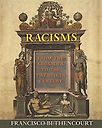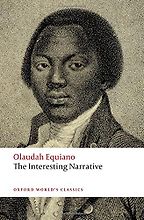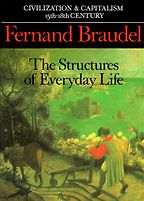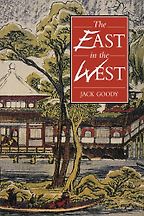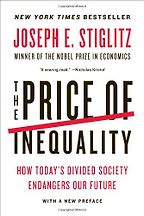What is racism?
Racism is a prejudice concerning ethnic descent coupled with discriminatory action. It’s a very simple definition, it took me a long time to arrive at it, but it is composed of these two parts. You need to have prejudices concerning a certain group of human beings — to whom you attribute mental and physical features reproduced from generation to generation — coupled with discriminatory action. If you have only prejudices, you don’t have racism. You only have racism with prejudice and discriminatory action.
And what is race? Some of these words have become so charged it’s become confusing. You mention in the introduction to your book on the history of racism, Racisms, that the difference within a supposed race is much wider than between races. On the other hand, I’m in China right now, when I see a Chinese person I do know they’re Chinese…
The noun “race” has a European background and has meant many different things over time and space. It was applied to many different situations. It started in the Middle Ages where, at first, it meant breeding of animals. It also meant experiments with plants. Then it was applied to human beings, in particular aristocratic lineages in northern Italy and France. In Iberia it fast became applied to people considered to have stained blood, like Muslims and Jews. Then it was applied to converted Jews and converted Muslims. With the Iberian expansion, race was applied to black people. In the 18th century you even had race applied to women — they were another race. Then, in the 19th century, you had race applied to nations. The nationalist movements of the 19th century supposed collective descent, so they fused nation with race.
The theories of race of the 18th and 19th centuries tried to define hierarchies of peoples of the world, based on physical features and mental attributes. It was a hierarchical system and it became quite rigid. There was a genuine scientific attempt to analyse varieties of people of the world, but the theory of races was also shaped by the ideology of the European expansion.
“Our big challenge as historians is to understand not only big structures — the framework of daily life, institutions, what shaped behaviour, but how people felt.”
My line of research was to understand why there was discriminatory action. Because racism is not innate. It emerges here and there, under special conditions. In the book, I do deal with race but what interested me was discrimination. Normally people are more interested in race than in racism, but I reversed the normal approach. I decided that race was more swampy, more shifting, more changeable. I needed to understand race as well, but with racism I felt I had more solid ground. I could understand racism at specific conjunctures triggering discrimination in a much more coherent way.
Are you going against the consensus when you say racism is not innate? Isn’t there a widespread belief that humans have a tendency — maybe because of evolution — to distrust people who look different?
I think the majority of my colleagues still work with the implicit idea of either innate racism or that racism only really kicked in after the theory of races. What I try to prove is that discriminatory action preceded the theory of races. I don’t share the view that first you have the theory and then you have the practice. In the case of racism you had the practice before the theory of races justified hierarchies and discrimination. In that I was going against what was previously more or less established. But the trend is changing. I am not claiming I am alone here.
So talk me through the books now. The first on your list is The Interesting Narrative by Olaudah Equiano, an account of his own life by a former African slave, published in 1789.
The choice of my books is not connected with racism directly but with the way I write history. History is exciting. I chose Olaudah Equiano because it’s an extraordinary source. He is an African slave who was first kidnapped in Africa, by other Africans, then sold to Europeans and sent to British America. He had an extraordinarily adventurous life, going back to Europe, sailing in the Mediterranean. He managed to buy his freedom, but was threatened several times with being kidnapped and put back into slavery. Recently the film 12 Years A Slave showed this reality — that was based on the testimony of another former slave, a freeman who was kidnapped.
I chose Olaudah Equiano, firstly, because it was perhaps the major document of the abolitionist campaign in England. It had an enormous impact. It showed how a former slave could be highly sensitive, emotional, articulate, with the right values, and it created a totally different dynamic for the abolitionist movement when it was first published in 1789. But it’s also a very rich document from a human point of view. For me this was very important. I used it in my book on racism to show what the consequences of slavery and racism must be considered at an individual level. We have to integrate emotions into history. History is made of sources, and primary sources are very important. I tried to build my book on racism upon primary sources. That was a big challenge, how to write a book covering ten centuries, largely on primary sources. Equiano is one extraordinary example.
When you talk about emotions, what do you mean? Do you mean people at the time, who read this book and were so upset with what it describes that they decided to oppose slavery?
I just mean how people felt. Our big challenge as historians is to understand not only big structures — the framework of daily life, institutions, what shaped behaviour, but how people felt. What were their emotions? Were they sad? Were they outraged? Were they in love? Were they experiencing friendship? Did they hate other people? The emotions we have nowadays were always there, but the big challenge for a historian is to understand how emotions were expressed and to put them back into the picture. This narrative of Equiano couldn’t be better. He really established friendships with people, he was the object of hate, people tried to kidnap him, he had fights. It’s a very lively story of a human being, and for a historian, this is a dream.
Let’s look at your next choice now, Fernand Braudel’s massive work, Civilization and Capitalism. Why is that on your list?
Everyone will agree that Braudel is one of the best historians of the 20th century. He really worked on a large scale. Civilization and Capitalism was a book he wrote and prepared his whole life. It was published in 1979 when Braudel was already in his 70s. It is three volumes, it’s huge, thousands of pages. He engages in a historical work which is extremely dense, complex and spanning all the world. Nowadays globalization is in fashion, but Braudel was taking a global approach to the world between the 15th and 18th century very early on. He managed to integrate all different civilizations, all different parts of the world. It is an extraordinary enterprise.
The way the three books are organized is that the first one is focused on the “long-term” structures. These are the structures of daily life, material culture – how people ate, how they dressed, how they used money for their needs, how they organized their life, what their habitat was.
The second volume is much more connected to markets, to capitalism, to organization of exchange, around trade, manufacturing, industries, how all these evolved in different parts of the world.
The third volume concerns time: how different systems, different world economies were structured in different periods of time around specific centres. This is very useful because it shows how centres evolved, how they were replaced, how they expanded, how they organized areas of influence, how peripheries emerged, and how areas of influence expanded. This kind of approach — which was developed by Immanuel Wallerstein in his 3-volume book on the world system — was accused of Euro-centrism. Wallerstein centred his analysis of capitalism on Europe, even if he did include Asia. Since the 1980s this idea of European precedence from the 16th century onwards has been challenged — by Bin Wong, Kenneth Pomeranz and Jack Goody.
Braudel, by contrast, who wrote before Wallerstein, had a much more comprehensive vision. He includes China, the Ottoman Empire and all the Muslim world. There is a hint that Europe, in many techniques, preceded other parts of the world, but Braudel was much more comprehensive.
Every book I’ve chosen is inter-disciplinary. Braudel integrates for me, in a fantastic way, history and geography and I don’t think you can write about history without introducing geography. The first big volume by Braudel was on the Mediterranean, in 1949. It was the first time the Mediterranean as a space was studied from a historical point of view, and this was a major breakthrough. In Capitalism and Material Life he developed this connection between time and space, and I think this is crucial for all historians.
In what way did Braudel influence your book on racism?
Braudel is an inspiration for locating your research, for considering the importance of place. When I chose the conjunctures which triggered racism, I was always careful to understand the precise place, and why the geography mattered.
Let’s go on to your next book, The East in the West by Jack Goody.
This book is part of the more recent trend challenging the Eurocentric narratives of the birth of capitalism and modern civilization. Jack Goody is interesting because he introduces the cultural side of history. He is an anthropologist. He engaged extensively in historical research, and left several crucial books — on The Domestication of the Savage Mind, on The Logic of Writing: how different kinds of writing can shape culture. In this book, The East in the West, he addresses several interesting issues concerning organizational culture in the East. Was it backwards? Was it behind Europe? He proved that family structures in India and China could be extremely efficient from an economic point of view. He also proved how rationality in business – for instance bookkeeping, accounting, paper money, the bill of exchange (which was supposed to have been born in Europe) already existed very early on in India and in China. His angle of approach is extremely interesting, because it goes to the core of cultural practices. It’s about economic structures, about enterprises, and how these family structures were extremely efficient at managing all their business with the most advanced techniques.
Get the weekly Five Books newsletter
So that’s why I introduced Jack Goody. While the book is not directly related to racism he addresses the hierarchies of peoples of the world that was present in the theory of races. He challenges and demolishes this idea of the 18th and 19th centuries, which saw Asia as backward, as static, as immobile. He shows all the vitality of their culture, of their economy and how these family structures played a crucial role in this world. So he has an indirect impact on my book. While Braudel for me is the perfect combination between history and geography, Jack Goody is the perfect combination between history and anthropology.
Your fourth book deals more directly with racism and its effects, The Dark Side of Democracy: Explaining Ethnic Cleansing by Michael Mann.
When I started my book on racism I was quite open-minded. I started with the Middle Ages, and I thought there was a good hypothesis relating racism in the Western world with the European expansion. The European expansion brought with it the need to classify different peoples of the world, the need to assert European superiority. But I didn’t know where to stop. At the beginning I thought I would stop with Darwin, but then I understood I had to include the 20th century, because it confirmed even more clearly that racism is triggered by political projects. Michael Mann was extremely useful in my research because he made me understand better the relation between nationalism and racism. In those circumstances, in the 19th century, nationalism based on democracy and citizenship triggered a struggle for territory, for the definition of new countries, mainly in central-eastern Europe and the Balkans. In that part of Europe you still had these composite, multinational empires — the Russian Empire, the Austro-Hungarian empire, the Ottoman Empire. All of these trends of nationalism — which had started at the beginning of the 19th century in a very generous, internationalist way, with dreams of sharing and cosmopolitanism — were confronted by the revolutions of 1848. Suddenly all these political projects bumped into claims of minorities. For instance, the Czechs had to deal with a strong German minority in the territory they were claiming. The Hungarians were confronted and challenged by Croatians and Romanians in the territories they were claiming.
After the failure of the revolutions of 1848, you have a different trend, much narrower, much less cosmopolitan, much more centred in this idea of nation as a collective descent. And democracy, based on citizenship, brought with it the idea of exclusion. When you claim a territory, the issue was to exclude minorities who were struggling for the same territory. So this is the dark side of democracy, and I think Michael Mann saw it very well. Michael Mann is a sociologist, he bases his work mainly on secondary literature, and I must say he does it brilliantly. I am very attracted by his theories and he has several great ideas. I would not follow the way he practices history because I prefer to work on primary sources, but his work was a great inspiration. Also, he links history with sociology. This is another inter-disciplinary approach. We always work with some theoretical framework, and I was very inspired all my life by Max Weber, another sociologist. So I am glad I can still maintain this dialogue with what Michael Mann represents, historical sociology.
In terms of Mann’s theory about the circumstances when ethnic cleansing arise, and also your own book on racism, do you think they have a practical application, that if we understand this history then we can prevent these things going forward?
I have no doubt about that. With all the cases he presented in his book and I presented in my book, we have many, many practical examples. I’m not saying we can define rules — Michael Mann is more focused on rules — but we have all these experiences and we can prevent future problems. For instance, in South Sudan, right now. There is an ongoing struggle for monopoly of resources. South Sudan inherited three-quarters of the oil deposits from the old Sudan. It’s a multi-ethnic new state, and there are there major ethnicities, the Dinka, the Nuer and the Azande. They were pastoralist populations also engaged with agriculture. They don’t have a great difference of tradition between them. The problem is that with civil war in the old Sudan, they lost their cattle, they lost part of their agriculture, there was devastation. Now they are used to war and they are struggling for this monopolization of resources, mainly this access to oil. The United Nations understood this from the beginning and is trying to limit and overcome civil war.
What about the last book on your list, The Price of Inequality by Nobel-prize winning economist Joe Stiglitz?
Stiglitz I chose for two reasons, firstly because it gives me the link between history and economics, and also because it makes the bridge to my new project of research on inequality. I’m working now on a history of inequality, because while I was working on racism I was bumping into this issue all the time. Inequality is also a complex issue and Stiglitz wrote this interesting book, The Price of Inequality. He updates the recent discussion and gives a new vision of this trend of divergence between those who earn more and more — the 0.1% of the population in the Western and other parts of the world — and the vast majority of the population. Until the 1980s, for almost one century we had, in the Western world, a convergence. You had the increase of the middle class, you had a significant reduction of poverty. So there was a quite interesting trend improving the conditions of life of most parts of the population. After the 1980s you have this counter-trend in which the middle class becomes more precarious. The growing consolidation of the middle class stopped. You have more temporary jobs, you don’t have the same rates of improvement concerning financial conditions. This situation is quite complicated and Stiglitz analyzes it as having a price. It is inefficient, this inequality, it is a threat for the economic future, and it is spreading to other parts of the world. The problem of this accumulation of capital by the top layer is that the money is not invested, this money does not trickle down. That is one of the main outcomes of recent research, the money is accumulated for consumption and it doesn’t go back into economic investment. The challenge is how to put this money back to work. So there is this huge weight on the economy, on society, and it’s threatening our future.
It’s still experimental, but in my new project I am interested in addressing the issue of inequality on a world scale, if possible over the long-term, so this reflection on current problems is very inspiring.
What I find interesting is that you read articles saying it’s to do with technology and economics, whereas Stiglitz is saying very clearly, no, it’s a political problem, rich people capture the political system with their money, and they skew it to benefit themselves so they just get richer and richer…
It is indeed a political problem. Nowadays we are more and more cautious of these connections between economy and politics and how this top layer manages in a certain way to capture the political system. It’s happened in the past, it’s not the first time. That’s why this is very inspiring for my historical research…
Five Books aims to keep its book recommendations and interviews up to date. If you are the interviewee and would like to update your choice of books (or even just what you say about them) please email us at [email protected]
Five Books interviews are expensive to produce. If you've enjoyed this interview, please support us by donating a small amount.

